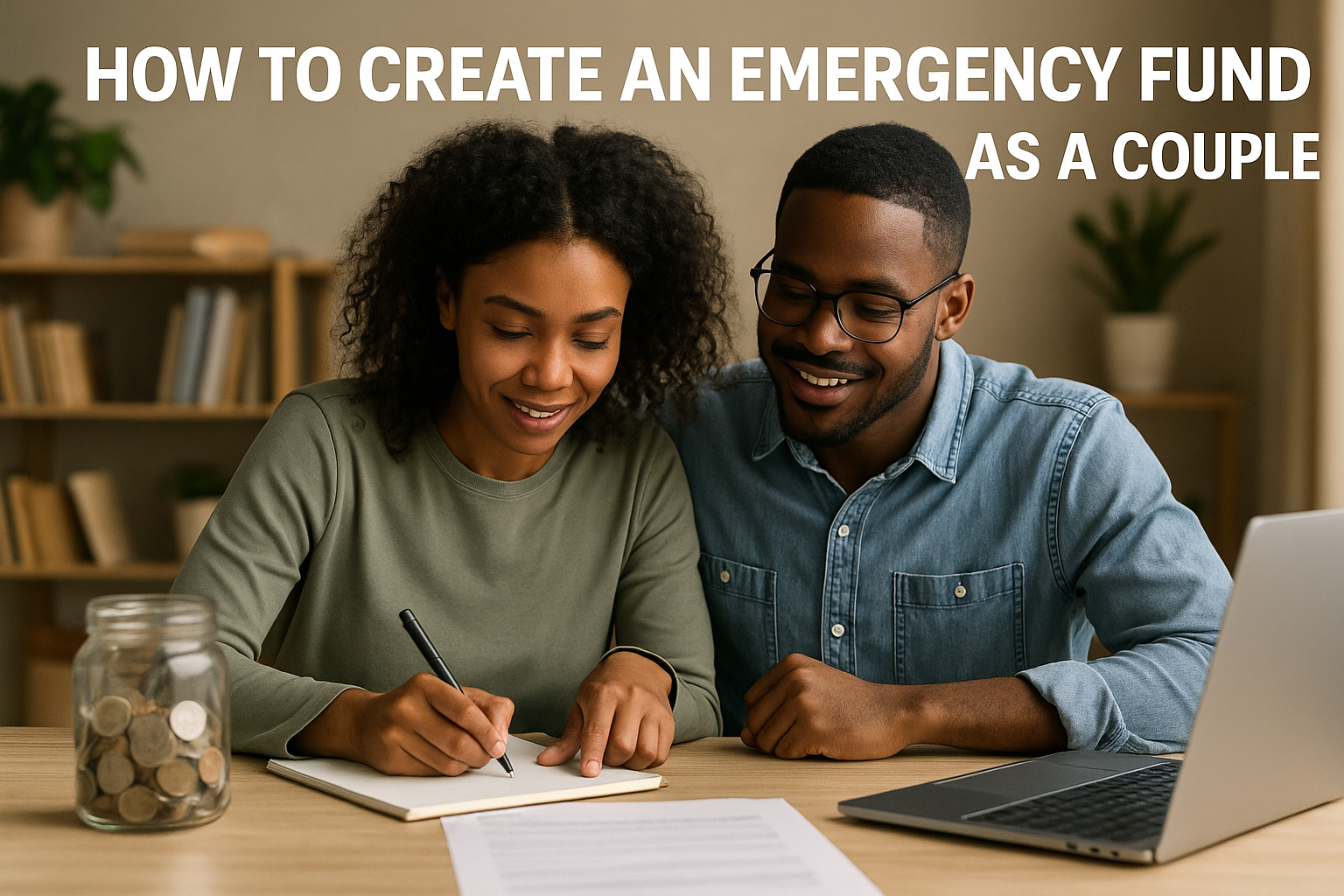Building an emergency fund is one of the most important financial steps for couples. It not only provides peace of mind but also strengthens the relationship by establishing a foundation of trust and preparedness. In this article, you’ll learn how to create a joint emergency fund effectively — even if you’re starting from zero.
Why Every Couple Needs an Emergency Fund
Emergencies don’t wait for the “right time.” Whether it’s a sudden job loss, unexpected medical bills, car repairs, or home maintenance, having a financial cushion can prevent stress and arguments. A joint emergency fund means you’re facing life’s curveballs together — united and prepared.
Step 1: Agree on the Purpose of the Fund
Start by discussing why you’re creating an emergency fund. Define what qualifies as an emergency for both of you. Some common situations might include:
- Job loss
- Medical emergencies
- Urgent home or car repairs
- Travel due to a family crisis
It’s crucial to establish boundaries so the fund isn’t used for non-emergencies like vacations, new gadgets, or spontaneous purchases.
Step 2: Decide on the Target Amount
A good rule of thumb is to save 3 to 6 months’ worth of living expenses. For couples, this number will depend on:
- Monthly fixed costs (rent/mortgage, utilities, groceries, insurance, debt payments)
- Whether both partners have stable incomes
- If there are children or dependents involved
Start with a small goal (e.g., $1,000) and gradually increase it. Don’t get overwhelmed by the total number — consistency is more important than speed.
Step 3: Open a Separate, Dedicated Account
Keep your emergency fund separate from your daily checking account. Choose a high-yield savings account that offers:
- Easy access
- No maintenance fees
- Competitive interest rates
Using a separate account reduces the temptation to dip into the funds for non-emergencies and makes tracking easier.
Step 4: Set Monthly Contributions
Agree on a monthly amount to contribute as a team. Even if you can only start with $50 or $100, the important thing is building the habit.
Options include:
- Automating transfers right after payday
- Using joint budgeting tools to identify spending areas you can trim
- Using round-up apps that deposit spare change from purchases
If you get unexpected income (like a bonus, tax refund, or cash gift), consider adding a portion of it to the emergency fund.
Step 5: Cut Expenses Together to Boost Savings
Look at your joint expenses and find ways to temporarily reduce them. Examples include:
- Cooking at home instead of eating out
- Canceling unused subscriptions
- Choosing more affordable entertainment options
- Creating a no-spend challenge for weekends
Celebrate small wins and make saving feel like a shared mission instead of a sacrifice.
Step 6: Monitor and Adjust
Check in monthly to track your progress. Use a shared spreadsheet or finance app to see how close you are to your goal. These meetings also create space to revisit your emergency definitions, discuss new expenses, or increase contributions when possible.
Remember: the goal isn’t perfection, it’s progress.
Step 7: Refill After Use
If you ever need to tap into the fund, don’t feel guilty — that’s what it’s there for! Just make it a priority to replenish it once the emergency is over.
Tips for refilling:
- Pause other non-essential savings temporarily
- Set a new short-term goal (e.g., refill $500 over 3 months)
- Adjust your budget to accommodate higher savings
Common Mistakes to Avoid
- Not talking openly about money: Transparency is key in a relationship.
- Using the fund for non-essentials: Stick to what you agreed is an emergency.
- Failing to automate savings: Make it as effortless as possible.
- Not reviewing the plan regularly: Life changes — so should your fund.
Strengthening Your Relationship Through Savings
Creating an emergency fund together is more than a financial move — it’s a relationship-building exercise. It shows that both partners are committed to protecting one another and facing challenges side by side. When life throws the unexpected your way, your joint savings will act as a shield — and a testament to your shared dedication.
Don’t wait for a crisis to strike. Start small, stay consistent, and build your emergency fund one step at a time. You’ll be glad you did — and so will your relationship.
